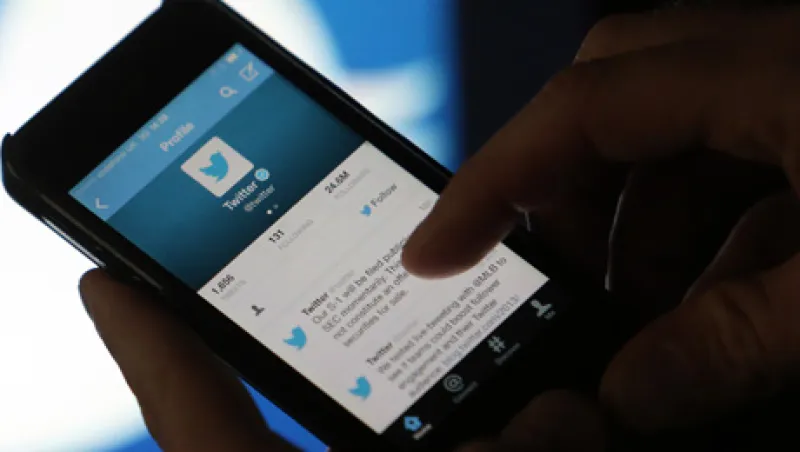Twitter has revolutionized the way market participants receive information. Could it be on the verge of changing the way traditional markets-focused news services operate as well?
In the mid–19th century, Paul Reuter famously used homing pigeons to deliver stock prices between Brussels and Aachen, handing the recipients of this information a major speed advantage in the markets. This innovation formed the basis of the Reuters news agency, which in turn led to the rise of wire services as a major funnel of time-critical information to market participants.
In recent years Twitter has emerged as the latest iteration of the process that Reuter set in motion more than 150 years ago, with information relevant to market moves disseminating on the microblogging site minutes or even hours before it is covered by traditional news services such as AP and Bloomberg News.
“Twitter has huge disruptive potential in the world of financial news, and it’s being accepted more and more, but until you can solve for a way to guarantee the credibility of market-moving tweets, it will remain a marginal concern,” says Douglas Taylor, founder and managing partner of Burton-Taylor International Consulting, an Osprey, Florida–based consulting firm that provides advice to companies in the market data industry. “People will still pay for the credibility that Bloomberg or Thomson Reuters brings,” rather than relying solely on Twitter as a source of information for news relevant to the markets, Taylor adds, “because they have money at risk.”
Twitter has spawned a fast-growing family of companies that analyze the data contained in individual tweets for market-critical insights, trends and trading signals. One of those companies, Dataminr, which has raised $46.5 million in funding since its founding in 2009, believes it has the technology to solve the credibility gap that affects potentially market-moving tweets. And it may soon sell its service to news agencies directly, potentially altering the way breaking-news desks at those outlets operate.
“We have access to over 500 million tweets a day,” says Ted Bailey, founder and CEO of Dataminr. “The width of types of information that affect the market is much greater than it was previously, and that can range from a Carl Icahn tweet to something that in the regular news world goes unnoticed.” As an example of the latter, Taylor cites the tweet posted on October 3 linking to a video of a Tesla Model S on fire, which fed concerns over the car’s lithium-ion battery; Tesla’s stock price dropped 3.5 percent in the 20 minutes following the tweet. “Twitter is really changing the types of information that move the market,” says Bailey.
Dataminr has access, via a partnership with Twitter, to what it terms the “full public firehose” of daily and historical tweets. As information is emerging on Twitter, Dataminr runs a set of complex algorithms containing more than 30 variables to distinguish breaking-news tweets from the undifferentiated stream of online chatter. It then sends alerts to its users, based on their preferences, whenever a potentially relevant tweet is published.
For much of its four-year existence, Dataminr has focused on selling this product to the financial industry, with Bailey claiming the firm has seen strong interest in the product from a broad array of market participants, including high-speed traders, portfolio managers and even investors with a long-term fundamental focus. The core of the pitch to these buyers has always been speed: Earlier this month Dataminr alerted its users to news that BlackBerry was abandoning its search for a buyer three minutes ahead of traditional news services and two minutes ahead of the stock’s sell-off, which eventually reached 20 percent. In early October Dataminr highlighted news of gunfire around the U.S. Capitol Building five minutes before the major news services, allowing its subscribers to get ahead of the 20-basis-point decline in the S&P 500 index that followed.
Testing tweet reliability is also a major concern for market participants, who need to have a mechanism for filtering truly credible market-relevant news from the wall of substanceless noise that social media is notorious for, argues Bailey. His firm’s most significant recent achievement in that area was its early detection in April that a tweet sent out under the handle of the Associated Press about a bomb blast in the White House was false.
That tweet “looked so suspicious in every regard, and our algorithm detected that,” says Bailey. “With the AP Twitter hack, firms that have our product were able to get the alert saying this is not real before others in the market and protect themselves accordingly.”
Now Dataminr is exploring taking its multivariable event detection system and marketing it directly to news services, some of which have been found wanting on both speed and reliability grounds in recent years. “There are a million applications for what we’re doing, and news is obviously a space where it’s easy to imagine that there could be a fit,” says Bailey.
It may be useful at this point to return to history: The first customers of Reuters were newspapers, which subscribed to the wire service and used it as a crutch for their own reporting. Most of those newspapers that subscribed to Reuters in the early days are long gone; but Reuters survives today as Thomson Reuters, a global data and news behemoth that produces in excess of 2 million stories a year and brings in more than $12 billion in revenue.
Will services like Dataminr — which cuts out the smoothed syntax and context-setting of traditional reporting and puts the consumer in direct contact with the raw, market-influencing tweets — signal doom for the speed desks and breaking-news departments of Bloomberg and Reuters? Bailey insists not: “It’s not in the picture for us to create a news service. We want to supplement, not replace.”
Get more on financial technology.







